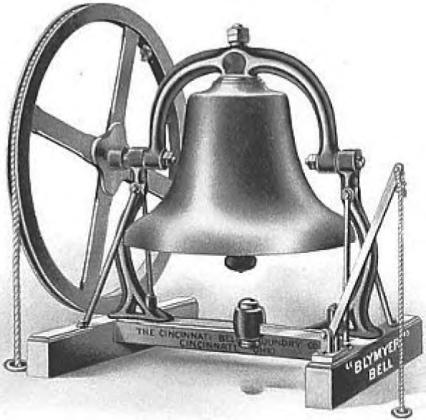D. C. Arthur was the Dublin School Superintendent during the early 1960s. In an article he wrote in March 1961 he mentioned the school bell that was used as a victory bell during athletic games. Before we get to the history of the bell, I would like to take us back to a time when schools first started in Dublin.
Mrs. Sarah Keith O’Neal taught school in 1860. She had 35 students and was paid $1.50 a month tuition. A residence was used in “Old Dublin” as a school room. If someone needed a place to live, the school was moved outside under the Live Oak trees. In 1874, S.T. Morris taught the first public school in a frame church building.
In 1884 the Dublin School District was incorporated for funding purposes. The church they were teaching in was later demolished to make way for the Fort Worth and Rio Grande Railroad that had arrived in 1889. (Dublin Progress March 3,1961, D.C. Arthur “Some interesting facts about Dublin Schools”) In 1884, J. L. Lattermore and his wife and daughter started operating the first publicly operated, state supported school in Dublin. He taught from 1884 until 1886 while his wife taught for the next 20 years. By 1885 the school population had increased to 158 students.
In 1885, the school board decided to buy two acres of land for a new school building. It was a frame building which started with only 4 rooms. As time passed and the number of students grew, the number of rooms increased until 1900 when it had ten school rooms and ten teachers. In 1900 the building burned and was replaced with a 3 story rock building. The Blymer Bell that was housed in the bell tower of the frame school must have been rescued after the fire and saved While the rock building was being built, wooden temporary frame buildings were used as classrooms. The Presbyterian Church on Grafton Street (The Little Church on Grafton) was used as a temporary classroom. (1902 Sanborn map of Dublin) As the population of Dublin grew, the number of students was increasing. The school system needed more space. In 1909 land was purchased north of the three story building. Several houses were moved off the land and a new building was built in 1913. That majestic building still stands next to the administration building.
The next time the bell was seen, was at the Dublin - Deleon football game during the 1960 season. That was a remarkable season for Dublin. Dublin and De Leon had not lost any football games until that deciding event. It was one of the most important games that week in the state according to Mac McKinnon. We even had sports writers coming to see the game from Houston. We trounced Deleon 28 - 0. Mr. McKinnon said that there was 10,000 people who came to see the game at Memorial Stadium. For Dublin, it was the first winning season since the 1930s.
I remember in the summer of 1961 going to visit the rock high school with my father to see how the remodeling of the school building was coming along. Workers had just found a bell under the stairway on the second floor of the building. That stairway was next to Mrs. Wilcox’s classroom. They said that they would probably just put it back where it had been stored. It must have been re-discovered by a separate set of carpenters later.
Markings on the bell suggest that it was cast at the Cincinnati Bell Foundry as part of the Blymyer series of bells. That series of bells were made of Bronze with a high tin
content. The additional tin in the casting enhanced the sound of the bell making a much better tone than the sound of a steel bell. The Blymyer catalog in 1904 shows the sizes of 22 to 30 inch bells were available. Our bell is the largest size of this series. These bells were used in schools, churches, court houses and farms. According to the catalog, the bell weights 300 pounds and cost $75 dollars to purchase at that time. The clapper, the inside part that rings the bell, is made of an alloy that also enhances the sound. It originally had springs inside that would bounce the clapper away from the side of the bell after it rang
so that the sound would not be muffled after it was struck.
That historic bell is now in the front hallway of the high school building on Highway 6. You can hear that wonderful Blymyer sound when students win a game or do well in an UIL event. Students are allowed to ring the bell to celebrate.

